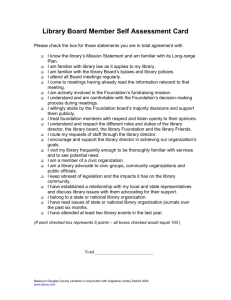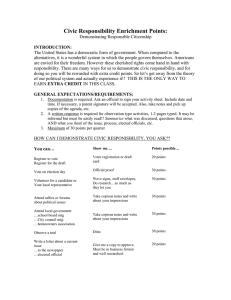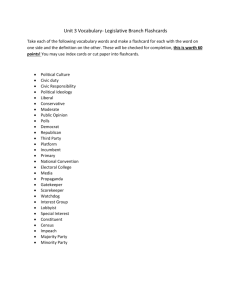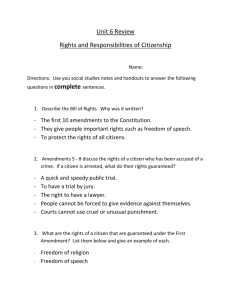Overview of new civic integration requirements
advertisement
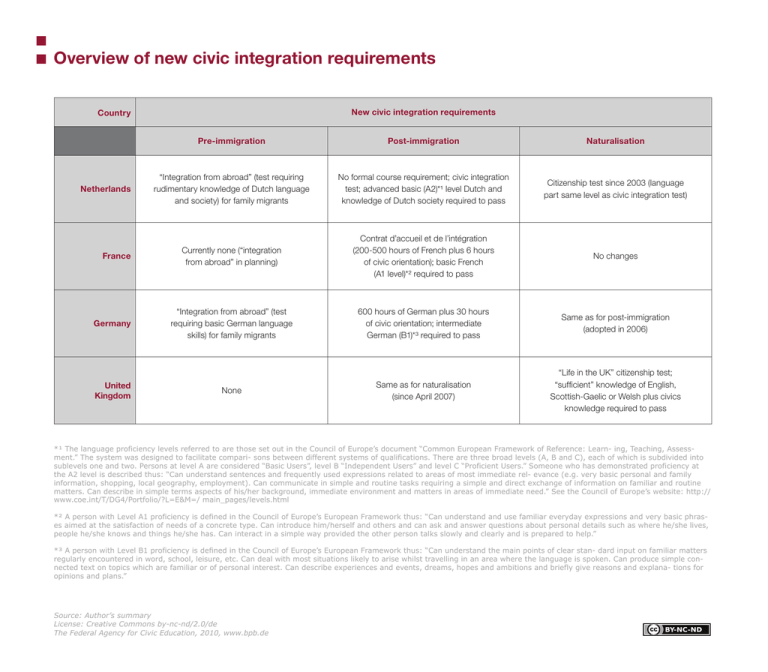
Overview of new civic integration requirements New civic integration requirements Country Netherlands France Germany United Kingdom Pre-immigration Post-immigration Naturalisation “Integration from abroad” (test requiring rudimentary knowledge of Dutch language and society) for family migrants No formal course requirement; civic integration test; advanced basic (A2)*¹ level Dutch and knowledge of Dutch society required to pass Citizenship test since 2003 (language part same level as civic integration test) Currently none (“integration from abroad” in planning) Contrat d’accueil et de l’intégration (200-500 hours of French plus 6 hours of civic orientation); basic French (A1 level)*² required to pass No changes “Integration from abroad” (test requiring basic German language skills) for family migrants 600 hours of German plus 30 hours of civic orientation; intermediate German (B1)*³ required to pass Same as for post-immigration (adopted in 2006) Same as for naturalisation (since April 2007) “Life in the UK” citizenship test; “sufficient” knowledge of English, Scottish-Gaelic or Welsh plus civics knowledge required to pass None *¹ The language proficiency levels referred to are those set out in the Council of Europe’s document “Common European Framework of Reference: Learn- ing, Teaching, Assessment.” The system was designed to facilitate compari- sons between different systems of qualifications. There are three broad levels (A, B and C), each of which is subdivided into sublevels one and two. Persons at level A are considered “Basic Users”, level B “Independent Users” and level C “Proficient Users.” Someone who has demonstrated proficiency at the A2 level is described thus: “Can understand sentences and frequently used expressions related to areas of most immediate rel- evance (e.g. very basic personal and family information, shopping, local geography, employment). Can communicate in simple and routine tasks requiring a simple and direct exchange of information on familiar and routine matters. Can describe in simple terms aspects of his/her background, immediate environment and matters in areas of immediate need.” See the Council of Europe’s website: http:// www.coe.int/T/DG4/Portfolio/?L=E&M=/ main_pages/levels.html *² A person with Level A1 proficiency is defined in the Council of Europe’s European Framework thus: “Can understand and use familiar everyday expressions and very basic phrases aimed at the satisfaction of needs of a concrete type. Can introduce him/herself and others and can ask and answer questions about personal details such as where he/she lives, people he/she knows and things he/she has. Can interact in a simple way provided the other person talks slowly and clearly and is prepared to help.” *³ A person with Level B1 proficiency is defined in the Council of Europe’s European Framework thus: “Can understand the main points of clear stan- dard input on familiar matters regularly encountered in word, school, leisure, etc. Can deal with most situations likely to arise whilst travelling in an area where the language is spoken. Can produce simple connected text on topics which are familiar or of personal interest. Can describe experiences and events, dreams, hopes and ambitions and briefly give reasons and explana- tions for opinions and plans.” Source: Author’s summary License: Creative Commons by-nc-nd/2.0/de The Federal Agency for Civic Education, 2010, www.bpb.de


